does my lemon tree needs iron ?
bigdoc T
last year
Featured Answer
Comments (40)
Ken B Zone 7
last yearSilica
last yearRelated Discussions
My lemon tree and me need your help!!
Comments (4)rhizo is correct in his thinking that the present container is more than big enough. When you first planted the tree in the whiskey barrel I assume that the potting soil you used filled the barrel to the top. Looking at the pictures, the soil has now compacted down four or five inches. As container soil degrades it compacts, and as it compacts the soil greatly loses porosity, thus the available soil oxygen becomes drastically reduced, and then many problem will begin to show. Miracle Grow potting soil is famous for compaction. Presently your tree looks healthy enough, but you need to keep an eye on it in the coming year. As far as the blooms and young fruitlets falling from the tree that is completely normal. A small tree the size of your lemon, usually only retain very few fruits. Only 2 - 5 percent of the blooms a citrus tree produces will ever become fruit, and then only 2-3 percent of the new fruit will ever remain on the tree to become mature. I don't think there is anything presently wrong with your tree....See MoreMy Lemon Tree( parent from Italy), Need Help! Interesting Story
Comments (5)Thank you for all the compliments and help! As for soil, it does include some bark components, but is not a specific recipe or anything and does contain some regular soil. Now that I know of some good soil recipes from the forum, I was going to amend it with either the coco-husk or 5:1:1 recipes. Although, it does seem to be doing great in what it is in. Yeah, the only huge lemon I know of is Ponderosa also, so I assume it can or is a Ponderosa. But since every Ponderosa I have seen or grew always fruited when young, I often have wondered if it is not, and maybe some weird Italian native that I do not know of? Mgk65, Thank you! I have learned something new again from you! I really have to find some info about leaf node #s and counts. Hopefully there is a thread here explaining it here in more detail on the forum? So, are the # of leaf nodes to fruit numbers pretty much the the same within one variety? Or, does the # of nodes before fruiting vary greatly even within the same variety? Does the leaf node count apply to just fruiting, or does it apply to when it starts to blossom also? Does a tree have to have a certain amount of leaf nodes before it just blossoms also? Thanks again for all the help! I will be back soon! Christy...See MoreMy Lemon Tree Needs a Good Home
Comments (3)Bonechickchris, Here are some thoughts... 1. Since it was happy in your last place but you don't have sufficient lighting in your new place can you augment the lighting with grow-lights? 2. Scout some public locations like library, town hall, retirement or rehabilitation facility, school, doctor's office, veteran's hospital etc. for places that are plant-friendly (already have some), have sufficient lighting and space and whatever else you think it needs. Then talk to someone in charge there with an offer to donate. 3. Google Garden Club of NJ (GCNJ) and find a local garden club in your area. You can probably call the GCNJ - or send email - and find out how to contact them. The local club may have some suggestions or someone who will take your tree....See MoreNeed help for my lemon tree
Comments (4)Marian, soil used for flowers holds water for too long and may result in root rot if you water too often, so be careful about how often you water. Use a thin dowel and push it to the bottom of the pot, withdraw it and look to see if it is damp or if soil sticks to it. If it does, then do not water yet. Wait to prune the top of the branches until you are sure that they are dead. I wish you good luck!...See Morebigdoc T
last yearHoward Martin
last yearKen B Zone 7
last yeartapla (mid-Michigan, USDA z5b-6a)
last yearlast modified: last yearSilica
last yearlast modified: last yearSilica
last yeartapla (mid-Michigan, USDA z5b-6a)
last yearlast modified: last yearSilica
last yearlast modified: last yeartapla (mid-Michigan, USDA z5b-6a)
last yearlast modified: last yearSilica
last yeartapla (mid-Michigan, USDA z5b-6a)
last yearlast modified: last yearHoward Martin
last yearKen B Zone 7
last yeartapla (mid-Michigan, USDA z5b-6a)
last yearlast modified: last yearSilica
last yearlast modified: last yeartapla (mid-Michigan, USDA z5b-6a)
last yearlast modified: last yearHoward Martin
last yearHoward Martin
last yearSilica
last yearlast modified: last yeartapla (mid-Michigan, USDA z5b-6a)
last yearVladimir (Zone 5b Massachusetts)
last yearlast modified: last yearKen B Zone 7
last yearHoward Martin
last yearHoward Martin
last yearKen B Zone 7
last yearAlex [Zone 6a Lithuania.]
last yearlast modified: last yearSilica
last yeartapla (mid-Michigan, USDA z5b-6a)
last yearlast modified: last yearSilica
last yearVladimir (Zone 5b Massachusetts)
last yeartapla (mid-Michigan, USDA z5b-6a)
last yearlast modified: last yearDave in NoVA • N. Virginia • zone 7A
last yearlast modified: last yearSilica
last yearlast modified: last yearHoward Martin
last yeartapla (mid-Michigan, USDA z5b-6a)
last yearlast modified: last yearSilica
last yearlast modified: last yeartapla (mid-Michigan, USDA z5b-6a)
last yearlast modified: last year
Related Stories
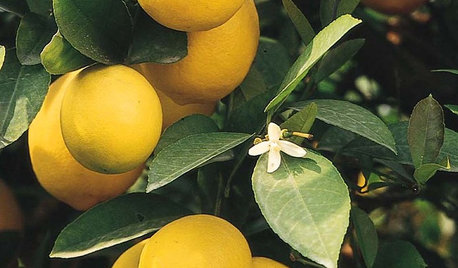
EDIBLE GARDENSThere’s a Lot to Love About a Meyer Lemon Tree
See how to grow this sweet fruit tree
Full Story
GARDENING GUIDESHow to Keep Your Citrus Trees Well Fed and Healthy
Ripe for some citrus fertilizer know-how? This mini guide will help your lemon, orange and grapefruit trees flourish
Full Story
HOUSEPLANTSCandelabra Tree Is One Cool Cactus Look-Alike
Here’s everything you need to know about growing this dramatic, easy-care plant indoors
Full Story
EDIBLE GARDENSHow to Add an Apple Tree to Your Edible Garden
Readily available, beautiful and fragrant, apple trees offer four-season interest along with crisp, juicy fruit
Full Story
GARDENING AND LANDSCAPINGCrazy for Fruit Trees
Whether a single citrus or a mini apple orchard, even the smallest landscape space can bear deliriously delicious fruit
Full Story
EDIBLE GARDENSHow to Grow 10 Favorite Fruit Trees at Home
Plant a mini orchard in fall, winter or early spring to enjoy fresh-off-the-tree fruit the following year
Full Story
FARM YOUR YARDIf You Have Room for Only One Fruit Tree ...
Juice up a small garden with one of these easier-care or worth-the-effort fruit trees for a mild climate
Full Story
HOLIDAYSHow to Care for Your Christmas Tree
Keep your tree looking lush until the last ornament is packed away with these tips for watering, using stands and more
Full Story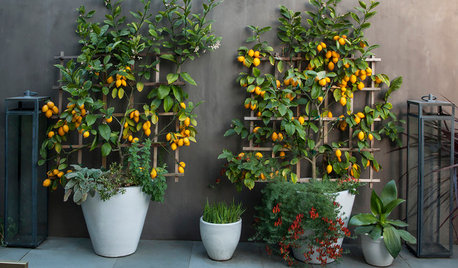
TREES10 Top Trees to Grow in Containers
These container-friendly trees make great specimens for pots on the patio or marking an entrance
Full Story
GARDENING GUIDES5 Best-Behaved Trees to Grace a Patio
Big enough for shade but small enough for easy care, these amiable trees mind their manners in a modest outdoor space
Full Story


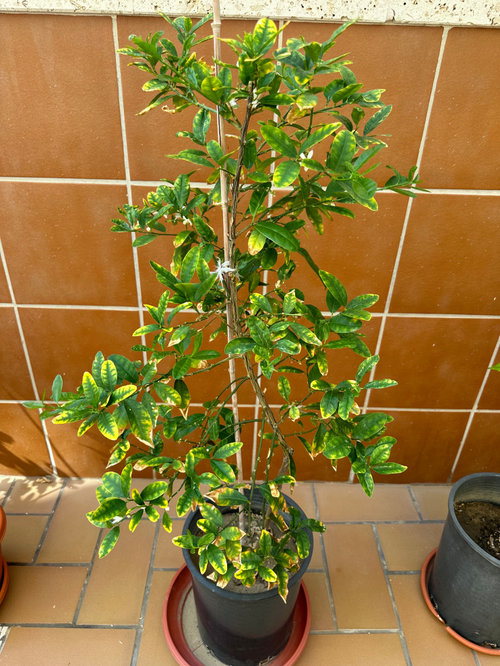

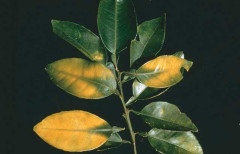
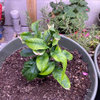
tapla (mid-Michigan, USDA z5b-6a)